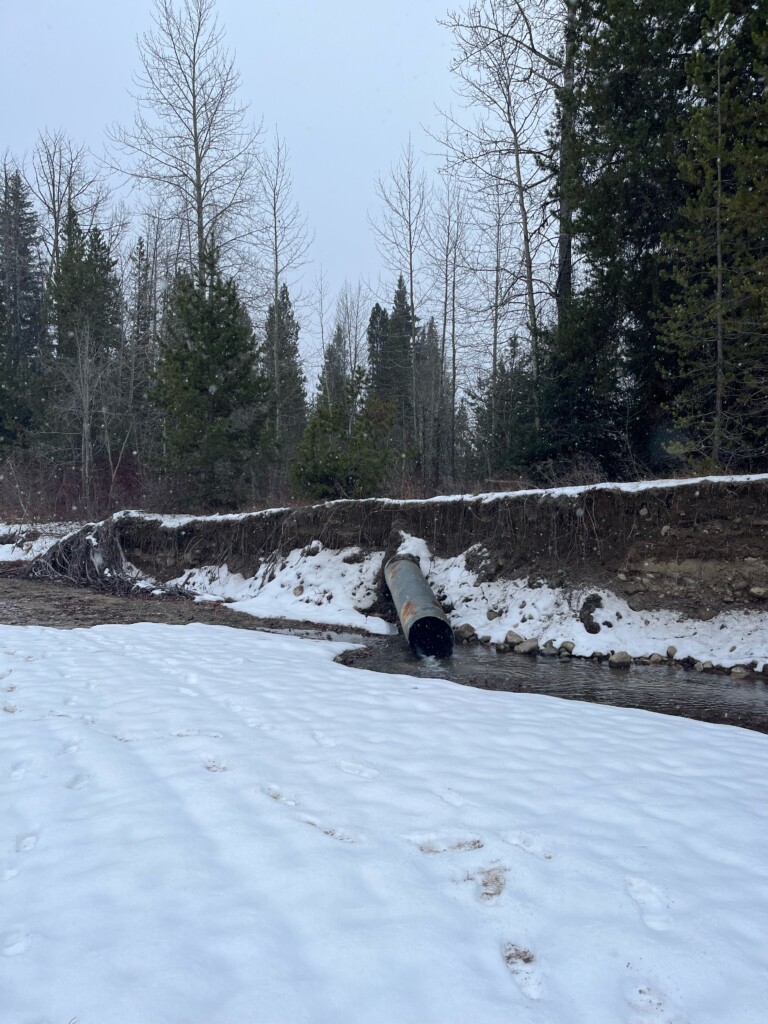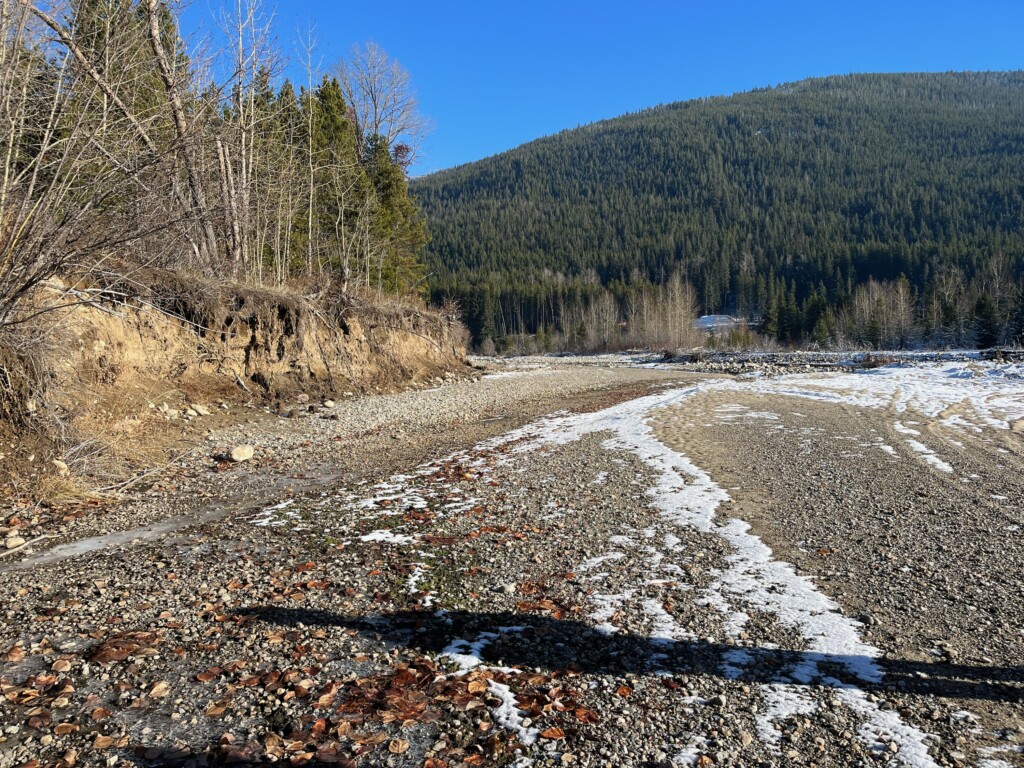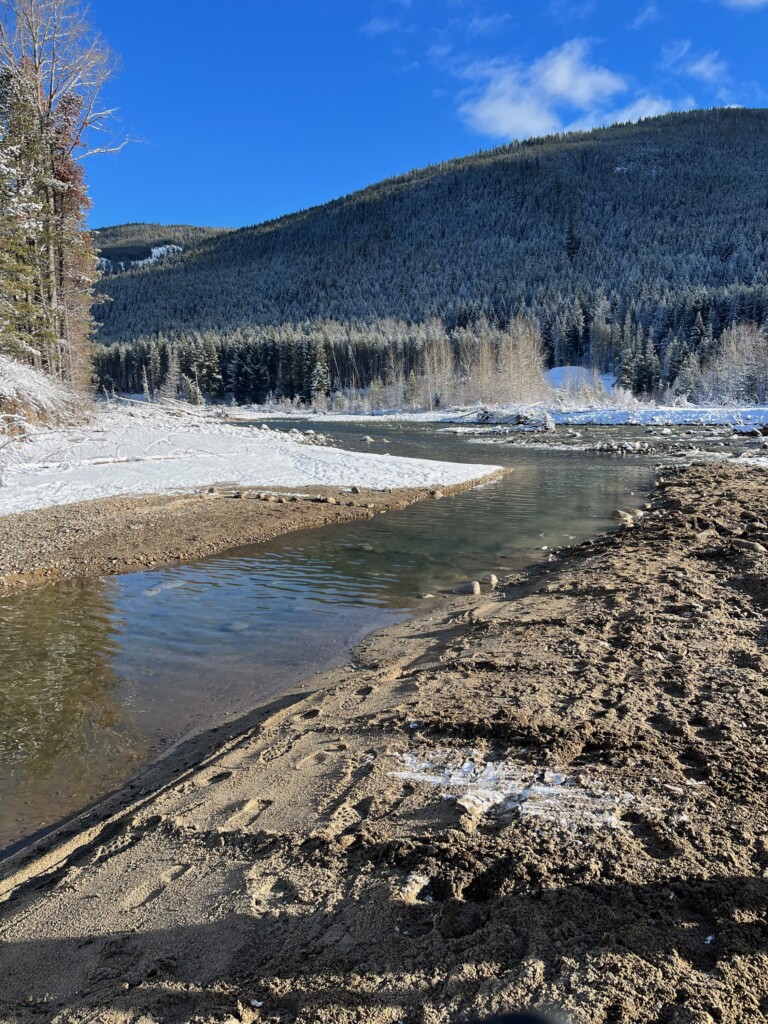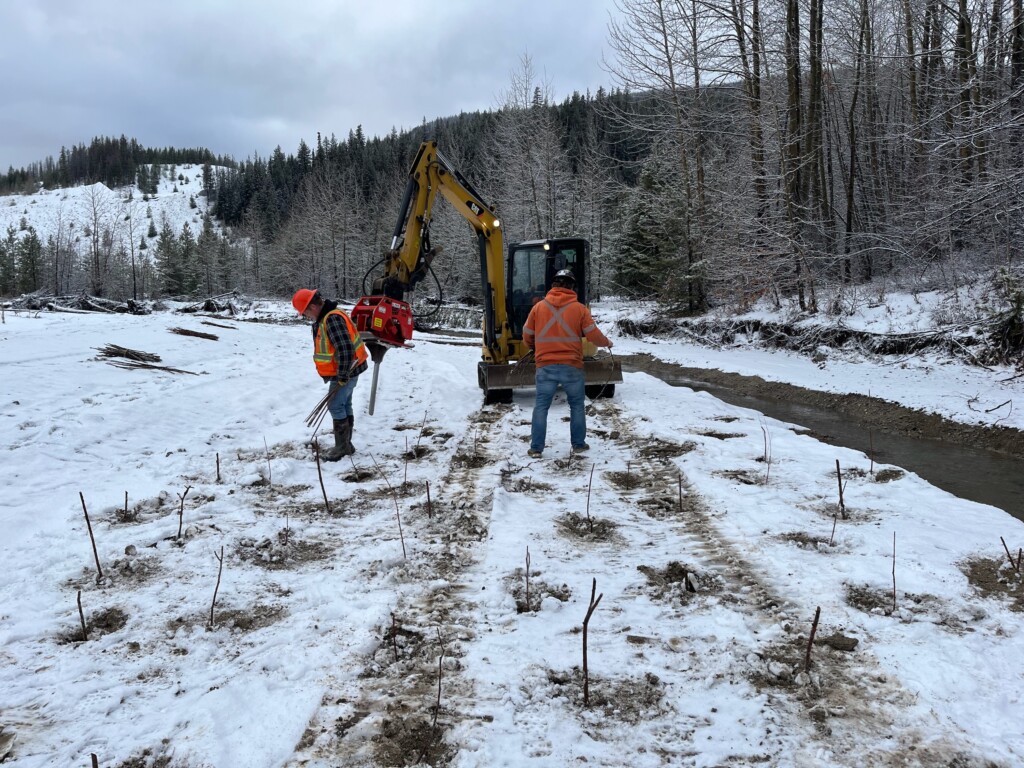The restoration of the Juliet Creek Side Channel included restoring access to the Coldwater River for fish passage following the flooding of the Coldwater River and restoring and enhancing rearing and refuge habitat, especially coho salmon.
The B.C. Wildlife Federation, the Federal Department of Fisheries and Oceans Canada (DFO), Scw’exmx Tribal Council, and Rock Solid Industries joined forces to remove barriers that obstructed the movements of fish and to reconnect the side channels to the Coldwater River.
The side channel is located in the Thompson-Nicola region, just south of Merritt.
Removing Barriers
A key aspect of the project was removing an outdated culvert and intake, which had been obstructing fish movement upstream. This removal was critical for re-naturalizing the stream and facilitating fish passage.

The side channel experienced significant impacts from flooding, resulting in a buildup of sediment at its confluence with the Coldwater River. Excavation of this channel was crucial to preserve its year-round connection with the Coldwater River. Without sediment removal, fish would be isolated during low flow periods. Moreover, during periods of higher flow, this channel will serve as an excellent habitat, offering sheltering pools for aquatic life.
Stream Connectivity
Reconnecting side channels to cold water streams is crucial for fish populations. Cold water streams provide a habitat with temperatures suitable for the survival, growth, and reproduction of various fish species. Connecting the side channels allows spawning fish to move freely, promoting sustainable and diverse fish populations. Such connections also contribute to the overall health and balance of aquatic ecosystems, supporting a wider range of aquatic life.


The above photos showcase the dramatic transformation of the area, with the side channel now successfully reconnected.
Enhancing Habitat Complexity
More than 1,200 cottonwood and willow trees were live staked to provide shade and restore riparian habitat severely damaged by flooding. Large woody debris from around the site, leftover from the flood, was also placed around the edge of the bank and slightly instream to enhance habitat complexity and help establish plants. These methods aim to create a more complex and supportive habitat for both plant and animal life.

Results: Coho arrived within the hour!
The project’s success at Juliet Creek Side Channel was underscored by the sighting of a Coho salmon in the newly connected habitat within an hour of the reconnection, demonstrating the significant ecological benefits of reconnecting side channels to cold water streams. This is a great example of the immediate impact restoration projects play in the health of fish populations and aquatic ecosystems.
This article was written by:
Leanne McDonald, Intermediate Aquatic Biologist, B.C. Wildlife Federation
Jamie Long, Conservation Stewardship Communications Coordinator, B.C. Wildlife Federation
